IN THIS ISSUE of Charleston Currents #10.50 | Oct. 29, 2018
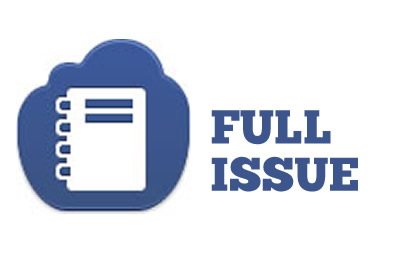 FOCUS, Morris: The October effect and the markets
FOCUS, Morris: The October effect and the markets
COMMENTARY, Brack: State should make it easier for people to vote
IN THE SPOTLIGHT: Magnolia Plantation and Gardens
GOOD NEWS: Nonstop flight to London to start in April at Charleston airport
FEEDBACK: Send us your comments … share your thoughts
MYSTERY PHOTO: A tough mystery
S.C. ENCYCLOPEDIA: Eugene Robinson
CALENDAR: Just in time for Halloween
FOCUS: The October effect and the markets
By Kyra Morris, contributing editor | What is going on in the markets?
- The third quarter of 2018 ended as the best quarter on the S&P 500 since 2013 – around a 7.2 percent increase.
- From Sept. 30 through Oct. 26, the S&P lost around 8.6 percent, the worst beginning of a quarter since 2008.
Is this the October effect, or is there something substantial going on? What are the realities?
It’s difficult to come up with convincing fundamental explanations for this poor performance. As expected, the Feds did increase interest rates at the end of September. Investors can also purchase U.S. Treasuries yielding 3 percent. This increase in yields are driven primarily by rising real yields that tend to reflect rising growth expectations. Economic growth should more likely be a positive, rather than a negative factor for market sentiment.
Earnings are good overall, and valuations have come down because earnings have outpaced stock prices. Trade tariffs have had an impact on some sectors, but their impact on the overall economic growth and inflation is modest at best. Fiscal stimulus should still provide support for businesses. The job market is tight with more jobs available than workers to fill them. Inflation remains in check and is not yet an issue. New orders and production for manufacturing has been mixed but overall holding a steady, moderate pace. With so many U.S. averages breaking out with new all-time highs, the sign of an unhealthy market does not seem warranted.
At least until recently within the U.S. equity markets, investors were not all that worried about the fundamentals.
Could this latest weakness be simply another temporary panic attack? This is normal. The markets get nervous, and historically the S&P experiences a 5 percent decline about every two months on average. Have the markets forgotten how to deal with volatility? In 2017 there was not one 5 percent decline, and in 2018 the time lag between panic attacks was longer than usual. The last stock market setback was February this year.
Seasonality statistics tell us that October should actually be a good month for stocks. But there’s another way of looking at seasonality. The chart below from Bloomberg Finance L.P. indicates that October is the most susceptible month to panic attacks. It is also, typically accompanied by unusually high levels of stock-market volatility. The data taken from 1980 through Oct. 18, 2018 shows that the average realized volatility tended to be fairly balanced for all calendar months. Only October stands out as the big exception.
October with the Great Depression, October with the crash in 1987, and October in 2008 all represent the market jitters that manifests itself in October. There is still the question: Why October? Unfortunately, there are not really any strong theoretical reasons to explain it. The study of calendar effects for a cause does not yield any answer except for a self-fulfilling phenomenon.
What’s next?
We believe there are some major macroeconomic factors that will be influential on investors over the next six to 12 months: trade policy, interest rates and Federal Reserve (Fed) policy, earnings growth, global economic growth, and the U.S. dollar.
Trade policy: Robert Bush, an economic strategist with DWS, said, “…tariffs in general can be thought of as throwing sand in the cogs of the usually well-oiled global trade machine.” Protectionism can damage the efficiencies of specialization and comparative advantage and erode economic gains overall.
Federal Reserve policy: The Federal Reserve policy is close to neutral. This may change in 2019 and 2020 as the economy is monitored rates may rise beyond the neutral level hopefully to keep overall economic alignment.
GDP growth: Gross Domestic Product growth is expected to remain moderately strong for the next six to 12 months, although somewhat slower reflecting the tight job market and the fading impact of fiscal stimulus.
The dollar: The value of the U.S. dollar is high currently. With some of the global uncertainties there is a flight to safety into U.S. Treasuries and the dollar.
From all I’ve read and studied to get a feel for what’s happening this October, I am not sensing that we are about to go over a cliff. Total doom and gloom are not apparent. There are issues to watch, and the economy will slow. Economic cycles will continue. I recommend positioning your portfolios to be able to ride through them. Do not try to time the markets. With all the underlying theories and causes identified, the realities are that the markets will continue to go up and down with a general upward slope over time.
Kyra H. Morris, a Certified Financial Planner, is CEO of Morris Financial Concepts, Inc., in Mount Pleasant. A national leader in the financial planning profession, she has been named several times by leading magazines as one of the country’s top financial planners.
- Have a comment? Send to: editor@charlestoncurrents.com
BRACK: State should make it easier for people to vote
By Andy Brack, editor and publisher | South Carolina legislators should start thinking about voting like people now think about online transactions.
 Consider how you bought stuff 20 years ago: You got in your car, went to a store, bought it, lugged it home and stored it away until you used it. It took a long time and there were a lot of steps to make a successful purchase. Then came the Internet.
Consider how you bought stuff 20 years ago: You got in your car, went to a store, bought it, lugged it home and stored it away until you used it. It took a long time and there were a lot of steps to make a successful purchase. Then came the Internet.
At first, people were skeptical about providing private information — their name, address and credit card number — to an online company trying to sell stuff. But over time, they got more comfortable with it. Then came Amazon and a plethora of companies. Now with the click of a few buttons, it’s common for people in South Carolina to get a book or sweater or paper towels delivered from anywhere in the world.
Online transactions are now easy and safe. It just took us a while to get used to them. Now, we need to do the same for voting so more Americans can exercise one of their most precious rights in our democracy.
Unfortunately, lawmakers across the country often seem to try to make it more difficult to vote, despite lots of rhetoric.
In Georgia, a governor’s race is being fought over whether the state should purget ballots rolls and reject absentee ballots over minor discrepancies. These Georgia officials are making it harder to vote, just as South Carolina lawmakers did a few years back when they insisted on photo identification for voters. Why? Because they feared voter fraud when none existed.
For the last few cycles in Charleston County, officials have added regional polling places around the long, thin county so voters have more places to vote. Why? Because they said parking was horrible and the county’s election warehouse was too cramped for space needed to prep machines and train workers. When a voter turned up recently to vote, he was given a little grief about not being in one of the three absentee polling places, but eventually was allowed to vote.
“I have instructed staff to not turn folks away who wish to vote at our headquarters location. However, our office is not adequate to the large numbers of absentee voters that we have had at the three locations,” Charleston election director Joe Debney told Statehouse Report.
Later, he added, “I strongly believe that we are giving more opportunities to voters by having off-site facilities. I have heard stories from voters from 2008 and 2010 when we had voting in our office. They have stated that they did not vote because of the limited parking and lines that went down Headquarters Road.”
Brady Quirk-Garvan, chair of the Charleston County Democratic Party, agreed: “We believe that the more people who exercise their right to vote, regardless of party, is a good thing. … The rest of the state should look to Charleston as an example of how to lead when it comes to voting and early absentee voting.”
Still, we’d argue state lawmakers need to overhaul state voting law by adopting more practices that make it easier to vote, such as:
Same-day registration. Revamp antiquated laws that require registration 30 days before an election. Computerization of elections makes it comparatively easy for someone to walk in with proper ID, register and vote on the same day. It’s working in Minnesota and other places.
Stop gerrymandering. If lawmakers would draw fair districts that reflect communities, people would have more confidence in the process and believe they had someone in the legislature who would listen. As it is, districts are drawn with so much partisanship that minority parties in a district feel left out.
Easier online voting. In the country that spawned Amazon, election officials ought to be able to make ubiquitous, simple, secure online voting better than voting on antiquated machines that have no paper trail and cost millions of dollars.
The next governor should appoint a comprehensive election reform commission to make it easier for all South Carolinians to vote. We need to come out of the dark ages on voting and get more people to the polls to make our democracy more reflective of what the people want.
- Have a comment? Send to: editor@charlestoncurrents.com
SPOTLIGHT: Magnolia Plantation and Gardens
 The public spiritedness of our underwriters allows us to bring Charleston Currents to you at no cost. Today we shine our spotlight on Magnolia Plantation and Gardens, founded in 1676 by the Drayton family. It has survived the centuries and witnessed the history of our nation unfold before it from the American Revolution through the Civil War and beyond. It is the oldest public tourist site in the Lowcountry and the oldest public gardens in America, opening its doors to visitors in 1870. Open 365 days a year, Magnolia offers its visitors splendid tours of nature and history and the role African-Americans played in the development of its award-winning Romantic-style gardens.
The public spiritedness of our underwriters allows us to bring Charleston Currents to you at no cost. Today we shine our spotlight on Magnolia Plantation and Gardens, founded in 1676 by the Drayton family. It has survived the centuries and witnessed the history of our nation unfold before it from the American Revolution through the Civil War and beyond. It is the oldest public tourist site in the Lowcountry and the oldest public gardens in America, opening its doors to visitors in 1870. Open 365 days a year, Magnolia offers its visitors splendid tours of nature and history and the role African-Americans played in the development of its award-winning Romantic-style gardens.
- Visit www.magnoliaplantation.com to learn how you can experience a complete plantation experience.
- Click here to learn about events and what’s new.
- To meet all of our underwriters,click here.
GOOD NEWS: Nonstop flight to London to start in April at Charleston airport
Staff reports | British Airways has announced plans for new, nonstop air service between Charleston and London’s Heathrow Airport. The twice-weekly flight, slated to start in April 2019, marks the first transatlantic passenger flight from the Lowcountry and the State of South Carolina.
“We are ushering in a new day for this region and our state as we launch this flight to a premier European destination,” said Paul Campbell, CEO of the Charleston County Aviation Authority.
British Airways will operate the new service on Thursdays and Sundays. Flights will leave from Charleston at 10:50 P.M. and arrive in London the next morning at 11:50 A.M. Returning flights will depart London at 5:20 P.M. and arrive in Charleston at 9:20 P.M.
“London’s Heathrow Airport is considered a gateway. British Airways offers service from Heathrow to over 130 destinations in Europe, Asia and beyond,” said Campbell. “We are excited to open the world to Charleston.”
“Overseas traveler preference for the South Carolina experience has been growing for many years, and this new nonstop service will help meet that demand,” said Duane Parrish, Director of the South Carolina Department of Parks, Recreation and Tourism. “In addition to Charleston, the new direct service will also increase overseas visitation to surrounding areas such as Myrtle Beach, Hilton Head and Columbia.”
The state’s largest airport is on a record-setting pace to exceed the four million passenger mark by year’s end. Through September, more than 3.3 million travelers have passed through the airport’s gates, up 12 percent from the same period in 2017.
The new flight is projected to generate an estimated economic impact of $20.2 million annually through new spending, job creation and other associated activity.
In other Good News:
Gilliard pushes for fairness. When you compare the regulations that taxi drivers have to meet compared to folks who drive for Uber or Lyft, there is no comparison, according to this story by Lindsay Street, Statehouse correspondent for our sister publication, Statehouse Report. She writes that state Rep. Wendell Gilliard, D-Charleston, wants regulations reviewed. “I’m all for fairness. I think everybody should be treated the same. Nobody should have priority above the other.” Click here to learn more.
One more debate. Want more gubernatorial debates? The Republican and Democratic candidates for governor will appear on stage for a debate 7 p.m. Oct. 29 for the final gubernatorial-level debate before the Nov. 6 election. Republican Pamela Evette and Democrat Mandy Powers-Norrell will meet in a live televised debate hosted by recently retired University of South Carolina dean and former CNN senior Washington correspondent Charles Bierbauer at SCETV studios in Columbia.
Send us your thoughts or what you love
We’d love to get your impact in one or more ways:
Send us a letter: We love hearing from readers. Comments are limited to 250 words or less. Please include your name and contact information. Send your letters to: editor@charlestoncurrents.com. | Read our feedback policy.
Tell us what you love about the Lowcountry. Send a short comment – 100 words to 150 words – that describes something you really enjoy about the Lowcountry. It can be big or small. It can be a place, a thing or something you see. It might the bakery where you get a morning croissant or a business or government entity doing a good job. We’ll highlight your entry in a coming issue of Charleston Currents. We look forward to hearing from you.
MYSTERY PHOTO: A tough mystery
The Mystery Photo above might be one of the hardest we’ve ever published. You might know where it is, but what are these folks doing? Send your guess to: editor@charlestoncurrents.com. And don’t forget to include your name and the town in which you live.
Our previous Mystery Photo
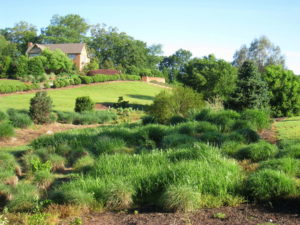 Our Oct. 15 mystery, a pastoral scene, proved to be a little harder than recent photos. It showed the Fran Hanson Visitor Center at the S.C. Botanical Gardens on the l Clemson University campus
Our Oct. 15 mystery, a pastoral scene, proved to be a little harder than recent photos. It showed the Fran Hanson Visitor Center at the S.C. Botanical Gardens on the l Clemson University campus
The only reader who correctly guessed was one who lives two states away — consistent sleuth George Graf of Palmyra, Va.
Some context via Graf: “According to upstateparent.com, “The gardens are at their most beautiful in the late spring and early summer, so now’s the time to plan an excursion.
If you’re just walking and taking in the scenery, it’ll take about an hour to do the main loop. You can easily double that time, however. The garden is pet-friendly.”
Send us a mystery: If you have a photo that you believe will stump readers, send it along (but make sure to tell us what it is because it may stump us too!) Send it along to editor@charlestoncurrents.com.
HISTORY: Eugene Robinson
S.C. Encyclopedia | Author, journalist, columnist and Pulitzer Prize winner Eugene Robinson is the son of Louisa Smith Robinson, a librarian at Claflin College, and Harold I. Robinson, an attorney and occasional professor of political science. Born in Orangeburg, Robinson grew up in a two-story clapboard house built by his great grandfather, Major John Hammond Fordham. He attended Trinity Methodist Church and studied at Felton Training School (later Felton Laboratory School) on the campus of South Carolina State University. In 1967 Robinson began the tenth grade at Orangeburg High School, becoming one of a handful of black students enrolled in the school only a few years after desegregation.
Several months into Robinson’s first year at Orangeburg High School, black students from Claflin College and South Carolina State were refused entrance into All-Star Lanes, a whites-only bowling alley. The event sparked protests. Governor Robert McNair blamed “outside agitators,” and police focused attention on Cleveland Sellers, a Denmark, South Carolina native and organizer for the Student Nonviolent Coordinating Committee (SNCC), who was staying a few houses down the street from the Robinson home. Robinson looked on as a dozen police cars parked outside of his home, the officers’ rifles aimed at the house down the street.
Robinson has called that moment “the first time [he] felt vulnerable” and “an awakening”; he has claimed that he no longer could think of “race as something [he] could just ignore. . . . The question was how to deal with it: how to cut it down to size, how to keep it in perspective, how to keep from being crushed by it. How to live with it.” Three days later, police opened fire on a group of protesting students, killing three, in an event that would later be dubbed “The Orangeburg Massacre.”
Robinson attended the University of Michigan in Ann Arbor, planning to study architecture. During his first architecture course, however, he recognized that he was “easily the most incompetent” student in the class. In the meantime, he won a student literary competition with an essay about the killings in Orangeburg. Predictably, he changed his academic focus to journalism. He wrote for the student newspaper, The Michigan Daily, all fours years of college, eventually becoming the first black student to be coeditor-in-chief.
Robinson began his journalism career at the San Francisco Chronicle where he covered the trial of newspaper heiress Patty Hearst. While living in the Haight-Ashbury District of San Francisco, he met his future wife, Avis, originally from Silver Spring, Maryland, who was in San Francisco completing postgraduate work.
In 1980 Robinson moved to Arlington, Virginia, to begin work at the Washington Post as a reporter covering city hall. He was named assistant city editor in 1981 and city editor in 1984. From 1988 to 1992, he was the Washington Post’s South American correspondent, based in Buenos Aires, Argentina. He was named the London bureau chief from 1992 to 1994 before returning to Washington to become the newspaper’s foreign editor. He was promoted to assistant managing editor in 1999 and managed the “Style” section of the newspaper. He became a regular columnist in 2005, eventually writing a twice-a-week column that reflects on the relationships between politics and culture. He also hosts a weekly online chat session.
During his tenure in Buenos Aires, Robinson spent time in Brazil—time that eventually led to the material for his first book, Coal to Cream: A Black Man’s Journey beyond Color to an Affirmation of Race, published in 1999. The New York Times described the book as a model for discussions of race. Simultaneously a memoir and a manifesto, Coal to Cream reflects on Brazilians’ fascination with the broad spectrum of skin color in the context of Robinson’s own experience in a world of two distinct races, both in the United States and elsewhere. In 2004 Robinson penned Last Dance in Havana: The Final Days of Fidel Castro and the Start of the New Cuban Revolution, in which the author anticipates a post-Castro Cuba and notes the embedded role that music and dance play in Cuban culture and politics.
Throughout the 2008 Democratic presidential primaries and, later, the presidential campaign, Robinson focused many of his newspaper columns on the rise of Barack Obama. Drawing on historical context and personal reflection, Robinson’s coverage of the Obama campaign provided a fresh perspective on race and politics while steadfastly avoiding the politics of identity. The columns earned Robinson a 2009 Pulitzer Prize for commentary.
Several of the columns cited for the 2009 Pulitzer Prize may have laid the foundation for Robinson’s 2010 book, Disintegration: The Splintering of Black America. In Disintegration, Robinson frames his discussion of contemporary black America by first identifying four discrete groups of black Americans: the Transcendent, the Mainstream, the Emergent, and the Abandoned. Robinson argues that the different interests and claims of each group must be acknowledged in order to respond with any success to the rapidly deteriorating plight of the Abandoned. The New York Times commented on the book’s ability to “tell us something familiar . . . in such a creative and clear-eyed way and with such force that we begin to see things differently.”
Robinson is a regular guest on television shows that focus on political commentary, including The Rachel Maddow Show, Hardball with Chris Matthews, Morning Joe, and Meet the Press. He was inducted into the South Carolina Academy of Authors in 2013. Eugene Robinson and his wife Avis are the parents of two sons: Aaron and Lowell. They live in Arlington, Virginia.
— Excerpted from an entry by Karl Fornes. This entry hasn’t been updated since 2006. To read more about this or 2,000 other entries about South Carolina, check out The South Carolina Encyclopedia, published in 2006 by USC Press. (Information used by permission.)
CALENDAR: Just in time for Halloween
Staff reports | Back by popular demand, Charleston Museum Chief Curator Grahame Long will present Manners Most Morbid: Charlestonians at the Grave at 6 p.m. Oct. 30 at the museum, located at 360 Meeting Street.
Lowcountry funeral planning and implementation became more of a social event ranging anywhere from the elegantly elaborate to the morosely mundane. As early as the mid-eighteenth century, an array of funerary arts and services were available and well-to-do Charlestonians paid handsomely for grand send-offs. These cultural interactions — and the decorations, mementos and observances they created — soon became some of the most visible and remarkable aspects of Carolina lore.
Long will share fascinating aspects of Charleston’s history as well as a few chilling stories, followed by a brief Q&A segment. This lecture is free and open to the public.
Harvest Festival. Charleston County Parks will host a traditional Southern fall shindig with its 17th annual Harvest Festival from 11 a.m. to 5 p.m. Nov. 3 at Johns Island County Park. The Harvest Festival is perhaps known best for its foot-stompin’ showcase of Charleston’s own bluegrass talent. Performing throughout the day will be five bluegrass bands. This year’s lineup will feature entertainment from local performers Roger Bellow and the Drifting Troubadours, Marshgrass Mamas, Gravel Road, Yee Haw Junction and River Boy. Admission is $8 per person. Kids 12 and under and Gold Pass holders are admitted free. Food and beverages available for additional fees. For more information, call 843-795-4386, visit CharlestonCountyParks.com.
Holiday Festival of Lights. The Holiday Festival of Lights returns to James Island County Park starting Nov. 9 for its 29th year This spectacular light show is one of Charleston’s most beloved holiday events, featuring an estimated two million shimmering lights. The Holiday Festival of Lights is open every evening, through Jan. 1, 2019 at 5:30 p.m. nightly and closes at 10 p.m. Sunday through Thursday and 11 p.m. Friday and Saturday. More info: www.HolidayFestivalofLights.com
C4WNEW: Nov. 15-16, Trident Technical College, North Charleston. This event, the Center for Women’s annual conference, will feature author Elizabeth Gilbert as special guest. To learn more or buy tickets, click here.
Early morning bird walks at Caw Caw: 8:30 a.m. every Wednesday and Saturday, Caw Caw Interpretive Center, Ravenel. You can learn about habitats and birds, butterflies and other organisms in this two-hour session. Registration not required, but participants are to be 15 and up. $10 per person or free to Gold Pass holders. More: http://www.CharlestonCountyParks.com.
AREA FARMERS MARKETS
SATURDAYS: The Charleston Farmers Market, is back in action from 8 a.m. to 2 p.m. every Saturday through Nov. 24 at Marion Square. A holiday market will be open Dec. 1, 2, 8. 9, 15 and 16.
SATURDAYS: Johns Island Farmers Market operates each Saturday from 9:30 a.m. to 1:30 p.m. year-round with more than 50 local farmers and vendors, food trucks, music and more. The market is located on the campus of Charleston Collegiate School, 2024 Academy Road, Johns Island.
SATURDAYS: The Town Market on James Island are again open. Open 9 a.m. to 1 p.m. every Saturday at the James Island Youth Soccer Club, 871 Fort Johnson Road, James Island.
WEDNESDAYS. The West Ashley Farmers Market, 55 Sycamore Ave., is open every Wednesday from 3 p.m. to 7 p.m. in Ackerman Park.
- If you have an event to list on our calendar, please send it to feedback@charlestoncurrents.com for consideration. The calendar is updated weekly on Mondays.
If you like what you’ve been reading, how about considering a contribution so that we can continue to providing you with good news about Charleston and the Lowcountry. Interested? Just click the image below.
https://charlestoncurrents.com/donate/
OUR UNDERWRITERS
Charleston Currents is an underwriter-supported weekly online journal of good news about the Charleston area and Lowcountry of South Carolina.
- Meet our underwriters
- To learn more about how your organization or business can benefit, click here to contact us. Or give us a holler on the phone at: 843.670.3996.
OUR TEAM
Charleston Currents offers insightful community comment and good news on events each week. It cuts through the information clutter to offer the best of what’s happening locally.
- Mailing address: P.O. Box. 22261 | Charleston, SC 29413
- Phone: 843.670.3996
Charleston Currents is provided to you weekly by:
- Editor and publisher: Andy Brack, 843.670.3996
- Contributing photographer: Michael Kaynard
- Contributing editor, common good, Fred Palm
- Contributing editor, money: Kyra Morris
- Contributing editor, Palmetto Poem: Marjory Wentworth
SUBSCRIBE FOR FREE
Subscriptions to Charleston Currents are free.
- Click here to subscribe.
- Unsubscribe. We don’t want to lose you as a reader of Charleston Currents, but if you must unsubscribe, you will have to do it through the email edition you receive. Just go to the bottom of any of your weekly newsletters and click the “unsubscribe” function. If that doesn’t work, please send us an email with the word “unsubscribe” in the subject line.
© 2008-2018, Statehouse Report, LLC. All rights reserved. Charleston Currents is published every Monday by Statehouse Report LLC, PO Box 22261, Charleston, SC 29413.



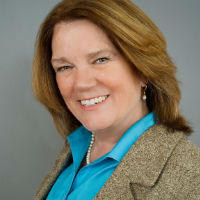
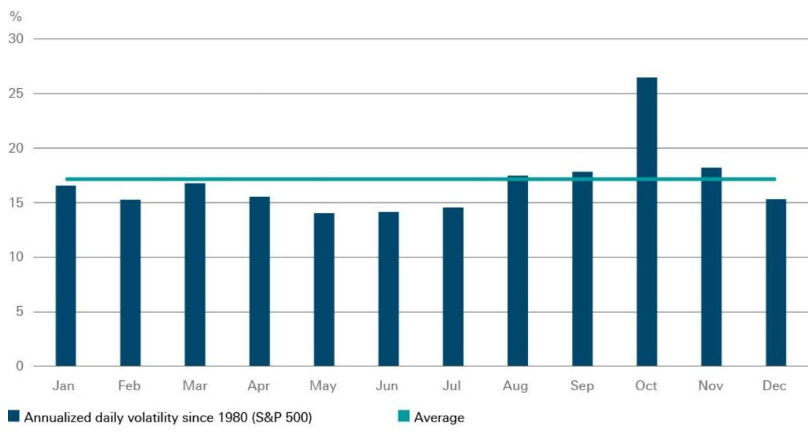
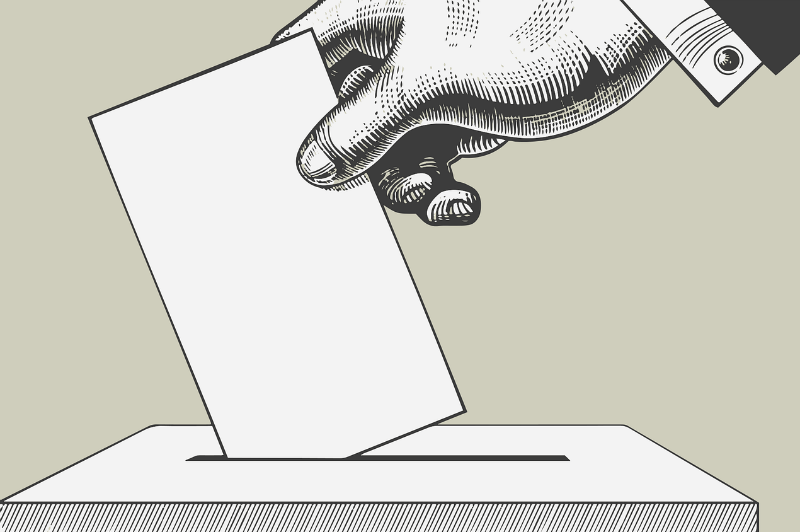

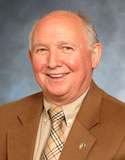
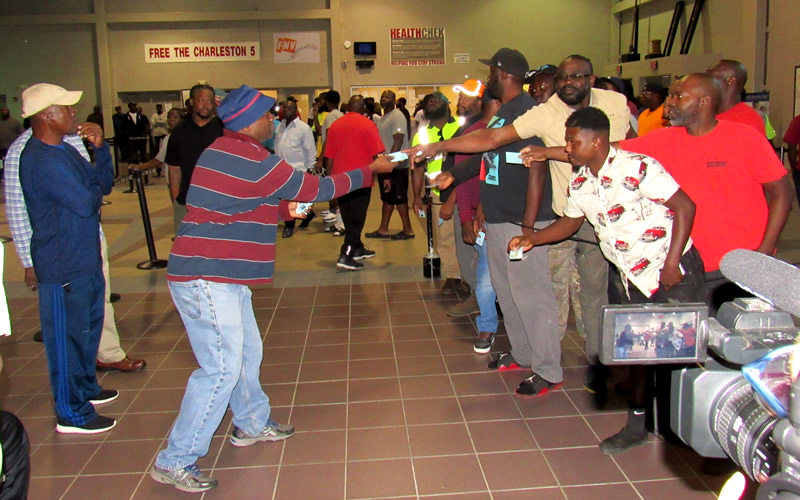



 We Can Do Better, South Carolina!
We Can Do Better, South Carolina!
























